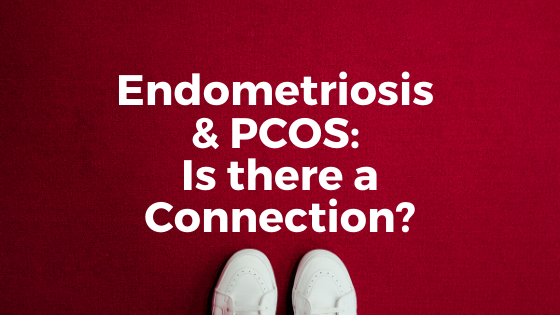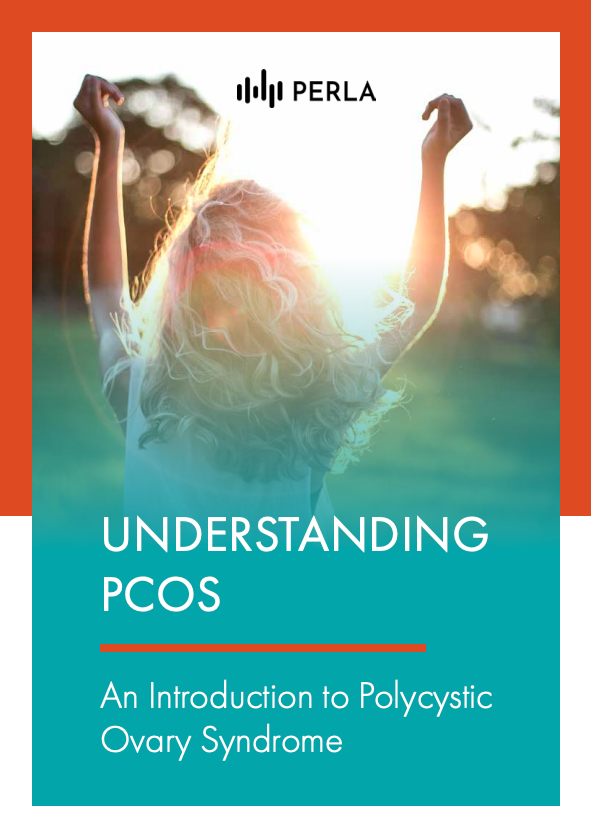Polycystic ovary syndrome (PCOS) is responsible for an estimated 70% of cases of female infertility due to anovulation or failure to ovulate.1 In addition to the classic symptoms of hirsutism, weight gain, acne, and menstrual irregularities, PCOS is linked to other health problems including endometriosis. What is endometriosis and how does it affect women with PCOS?
The Relationship between Endometriosis and PCOS
Endometriosis was first discovered 160 years ago by the German physician Carl Freiherr von Rokitansky, who was one of the first to detect abnormal endometrial tissue growth outside of the uterus.2
His findings helped future researchers further identify and understand this complex disorder. Although more information about endometriosis is now available, it remains to baffle scientists and experts in the field;3 thus, the quest for better intervention and an eventual cure continues to this day.
How Are They Connected?
The combination of endometriosis and PCOS is not uncommon, according to several studies.4,5 But there is no evidence that one causes the other. In one of the studies, it was found that 70% of women with PCOS and persistent infertility have underlying endometriosis.
Interestingly, a large cohort study found that endometriosis was more common in leaner women.6 Women with PCOS are often overweight and may be less likely to have endometriosis. In the study, women who are experiencing infertility with current BMIs of 35–39.9 had a lower risk of endometriosis compared to those with lower BMI.
Both PCOS and endometriosis are difficult to detect and are often misdiagnosed. Many women don’t recognize the symptoms and attribute them to changes in the menstrual cycle. However, these reproductive system disorders can impact fertility, so a delayed diagnosis or misdiagnosis is certainly not something to take lightly.
If you are being treated for PCOS and still have difficulty getting pregnant, especially if you are experiencing significant pelvic pain, you might want to discuss the possibility of having other reproductive issues, such as uterine fibroids or endometriosis, with your healthcare provider or PCOS care team.
What is Endometriosis?
Endometriosis is a chronic condition affecting at least 10% of women worldwide.7 The endometrium refers to the cells that make up the lining of the inner layer of the uterus (womb). When the endometrium is found in locations outside the uterus it is known as endometriosis.
There is a wide range of symptoms associated with endometriosis. Some women experience one or two symptoms. Others experience no symptoms and their condition is only discovered during consultations for infertility.
Common symptoms of endometriosis:
- Painful periods (dysmenorrhea)
- Pelvic pain
- Painful intercourse (dyspareunia)
- Lower back pain
- Bloating
- Constipation or diarrhea
- Fatigue
- Heavy bleeding
- Difficulty conceiving
What Happens
During the menstrual cycle, the endometrium naturally swells, thickens, and becomes a blood-vessel rich tissue. This layer is then completely shed when you have your monthly period. In endometriosis, however, the endometrial cells grow anywhere in the pelvis and form into nodules, implants, or endometriomas.8 They vary in size, ranging from microscopic to one as large as a grapefruit.
These cells also respond to menstrual hormones, particularly estrogen and progesterone, and undergo regular cycles of growth and bleeding. But while the normal endometrium is sloughed and removed from the body through menstruation, the abnormal endometrial cells have nowhere to go. So they bleed onto the area around them, causing irritation and inflammation as well as pelvic pain – the primary symptom of endometriosis.
What Causes It
The most widely accepted theory for the development of endometriosis is John Sampson’s theory of retrograde menstruation.9 It states that menstrual blood sometimes flows backward through the fallopian tubes into the peritoneal cavity, causing the implantation of endometrial cells in other areas outside the uterus. Most experts believe that the cause of endometriosis is multifactorial. Genes also play a role. Your risk for developing the condition is 7 to 10 times higher if you have a family member with endometriosis.
How does Endometriosis Cause Infertility?
Over the years, gynecologists and scientists have tried to find out how endometriosis causes infertility, but none of the theories proposed satisfactorily explains the reason behind it. A severe form of endometriosis that causes damage to the organs of the pelvic cavity may lead to infertility. However, severe endometriosis is rare, and women with mild or moderate conditions may still suffer from endometriosis-associated infertility.
What To Do
Endometriosis and PCOS are two of the most common causes of infertility, but with appropriate interventions, many women are still able to conceive and give birth to healthy babies. Treatment for endometriosis depends on the woman’s symptoms, age, and fertility. Consult a fertility specialist if you have been actively trying to get pregnant for a year without success. You and your PCOS care team should work out with a healthcare plan to address the symptoms of endometriosis.
Sources:
- R Jeffrey Chang, Heindel JJ, Dunaif A. Polycystic Ovary Syndrome. New York: Marcel Dekker; 2002.
- Santora E. Karl Freiherr von Rokitansky (1804–1878) | The Embryo Project Encyclopedia. embryo.asu.edu. https://embryo.asu.edu/pages/karl-freiherr-von-rokitansky-1804-1878. Published August 12, 2019. Accessed August 20, 2020.
- Acién P, Velasco I. Endometriosis: A Disease That Remains Enigmatic. ISRN Obstetrics and Gynecology. 2013;2013:1-12. doi:10.1155/2013/242149
- Holoch KJ, Savaris RF, Forstein DA, et al. Coexistence of polycystic ovary syndrome and endometriosis in women with infertility. Journal of Endometriosis. 2014;6(2):79-83. doi:10.5301/je.5000181
- Holoch KJ, Moorhead A, Miller PB, Higdon HL, Likes CE, Lessey BA. Endometriosis in women with polycystic ovary syndrome (PCOS) and its role in poor reproductive outcomes. Fertility and Sterility. 2011;96(3):S133. doi:10.1016/j.fertnstert.2011.07.51
- Shah DK, Correia KF, Vitonis AF, Missmer SA. Body size and endometriosis: results from 20 years of follow-up within the Nurses’ Health Study II prospective cohort. Human Reproduction. 2013;28(7):1783-1792. doi:10.1093/humrep/det120
- Bulletti C, Coccia ME, Battistoni S, Borini A. Endometriosis and infertility. Journal of Assisted Reproduction and Genetics. 2010;27(8):441-447. doi:10.1007/s10815-010-9436-
- Ros Wood, Henderson L. Explaining Endometriosis. St. Leonards, N.S.W. ; London: Allen & Unwin; 2001.
- Burney RO, Giudice LC. Pathogenesis and pathophysiology of endometriosis. Fertility and Sterility. 2012;98(3):511-519. doi:10.1016/j.fertnstert.2012.06.029


